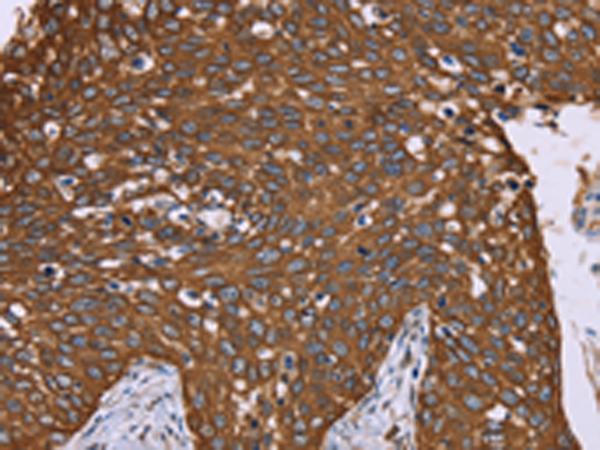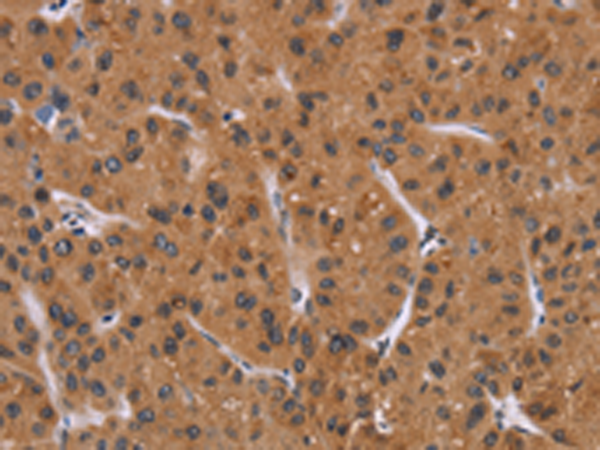


| WB | 咨询技术 | Human,Mouse,Rat |
| IF | 咨询技术 | Human,Mouse,Rat |
| IHC | 1/50-1/100 | Human,Mouse,Rat |
| ICC | 技术咨询 | Human,Mouse,Rat |
| FCM | 咨询技术 | Human,Mouse,Rat |
| Elisa | 1/10000 | Human,Mouse,Rat |
| Aliases | OI9; CYPB; SCYLP; CYP-S1 |
| WB Predicted band size | 24 kDa |
| Host/Isotype | Rabbit IgG |
| Antibody Type | Primary antibody |
| Storage | Store at 4°C short term. Aliquot and store at -20°C long term. Avoid freeze/thaw cycles. |
| Species Reactivity | Human, Mouse, Rat |
| Immunogen | Fusion protein of human PPIB |
| Formulation | Purified antibody in PBS with 0.05% sodium azide and 50% glycerol. |
+ +
以下是3篇关于Mannose Receptor(CD206/MRC1)抗体的关键文献概览:
---
1. **文献名称**:*Targeting of antigens to CD206 promotes antigen uptake and delays CD8+ T cell priming*
**作者**:Canton J, et al. (2017)
**摘要**:研究发现Mannose受体介导的抗原递呈可抑制CD8+ T细胞活化,提示其在调节免疫应答中的作用,为疫苗设计提供新思路。
---
2. **文献名称**:*Distinct dendritic cell populations express different mannose receptors in human and mouse*
**作者**:Sallusto F, et al. (2001)
**摘要**:通过抗体标记分析,揭示人鼠树突细胞亚群中Mannose受体表达差异,证明其在病原识别和免疫激活中的异质性。
---
3. **文献名称**:*The mannose receptor: A pattern recognition receptor in pathogen sensing and immune homeostasis*
**作者**:Taylor PR, et al. (2002)
**摘要**:综述Mannose受体作为模式识别受体的功能,强调其通过抗体阻断实验证实的病原结合能力和免疫调节作用。
---
4. **文献名称**:*Mannose-functionalized nanoparticles for targeted delivery to immune cells*
**作者**:Jiang W, et al. (2013)
**摘要**:利用抗Mannose受体抗体修饰纳米颗粒,成功实现抗原靶向递送至巨噬细胞,增强疫苗和药物递送效率。
---
以上文献覆盖基础机制、免疫调控及生物医学应用,可通过PubMed或Google Scholar搜索标题获取全文。
The mannose receptor (MR, CD206) is a type I transmembrane protein belonging to the C-type lectin receptor family, primarily expressed on antigen-presenting cells like macrophages and dendritic cells. It recognizes terminal sugar motifs such as mannose, fucose, and N-acetylglucosamine found on pathogens, facilitating their uptake via endocytosis or phagocytosis. Structurally, it contains multiple domains: an N-terminal cysteine-rich region, a fibronectin type II domain, eight C-type lectin-like domains (CTLDs), a transmembrane domain, and a cytoplasmic tail.
MR plays dual roles in immunity—promoting pathogen clearance and modulating immune responses. It contributes to antigen presentation, tissue remodeling, and homeostasis by interacting with endogenous glycoproteins. Its involvement in immune tolerance and anti-inflammatory signaling makes it critical in diseases like cancer, fibrosis, and autoimmune disorders.
Antibodies targeting the mannose receptor are vital tools for identifying MR-expressing cells in research and diagnostics. They enable visualization and quantification of MR in tissues (e.g., tumor-associated macrophages) using techniques like flow cytometry, immunohistochemistry, and Western blot. These antibodies also aid in studying MR's role in pathogen entry (e.g., HIV, Mycobacterium tuberculosis) and its potential as a therapeutic target for drug delivery or immunotherapy. Recent studies explore MR's function in tumor microenvironments and its utility in designing glycan-based vaccines or targeted therapies.
×